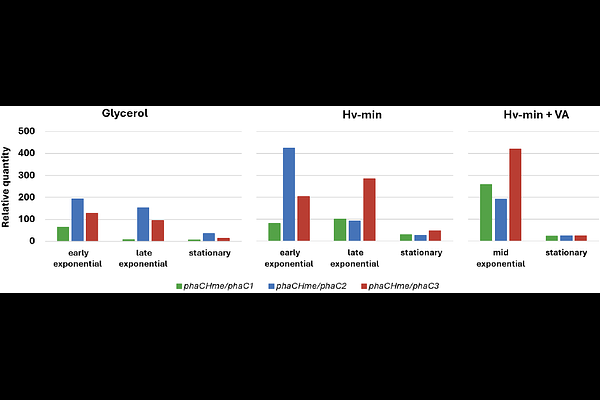Beyond the canonical PHA synthase: insights into transcriptional expression and functions of phaC paralogs in Haloferax mediterranei

Beyond the canonical PHA synthase: insights into transcriptional expression and functions of phaC paralogs in Haloferax mediterranei
Vanden Haute, C.; Schroyen, B.; Hennecke, U.; Peeters, E.
AbstractPolyhydroxyalkanoates (PHAs) are biodegradable polyesters that can be used as sustainable alternatives to petroleum-based plastics. The halophilic archaeon Haloferax mediterranei is a promising PHA producer with many competitive advantages, mostly linked to its extremophilic lifestyle. The PHA synthesis enzymes of H. mediterranei have been investigated, the most important one being a class III PHA synthase consisting of two subunits (PhaCHme and PhaEHme). Three additional phaC paralogs (phaC1, phaC2 and phaC3) were found in the genome sequence and were previously described as cryptic genes. In this study, we investigate these genes in greater detail. Through a targeted bioinformatics pipeline, we unravel the diversity of PHA synthases in Halobacteriales, which highlights the unique traits of H. mediterranei. Additionally, we investigated native gene expression patterns of the paralogs in different conditions relevant to PHA production: a high-growth condition, a low-growth condition and a condition in which the monomeric PHA composition is altered by feeding valeric acid. RT-qPCR assays revealed that the three phaC paralogs were actively transcribed and regulated under different nutritional conditions, contradicting the previous observations of the genes having a cryptic nature. The regulation of the paralogs seems to be independent on the monomeric composition of the produced polymers, but dependent on the growth phase. This suggests that all paralogs might play a role in the native PHA metabolism of H. mediterranei. Finally, we hypothesize about the potential functions of the paralogs and open new avenues for future characterization efforts towards the engineering of tailor-made PHAs.